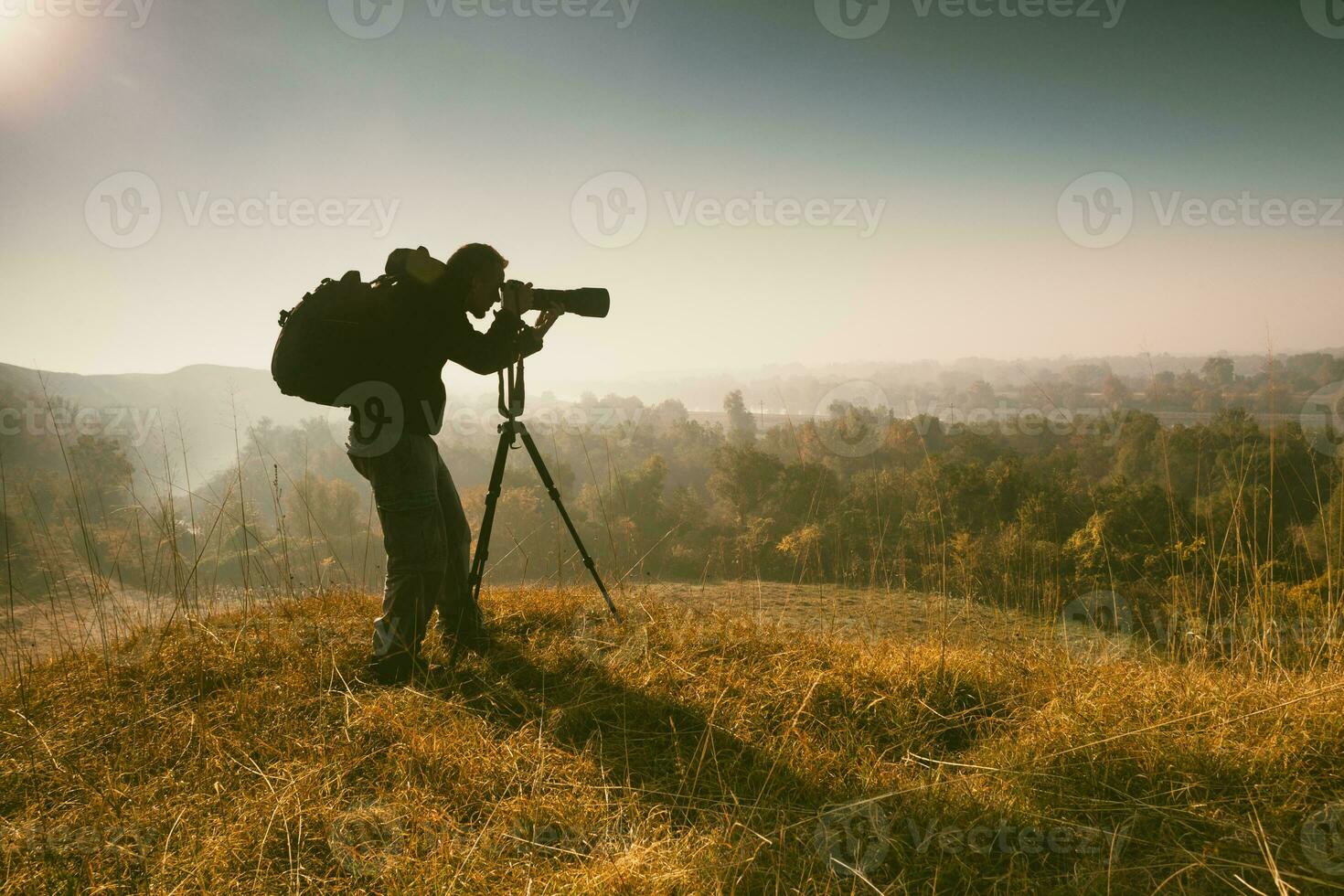Photography, as both an art form and a means of capturing moments, has undergone a revolutionary transformation since its inception. What began as a process that required bulky equipment and complex chemical processes has evolved into a medium that is accessible to millions, allowing individuals to take high-quality images using compact, user-friendly devices. The transition from film to digital photography is one of the most significant changes in the history of the art form, and understanding this evolution provides insight into the ways technology has reshaped not only photography but the way we view and document the world.
In this article, we will explore the journey of photography from the early days of film-based cameras to the digital age, highlighting key innovations, technological advancements, and the profound impact on the art and business of photography.
1. The Early Days: The Birth of Photography
The Daguerreotype: A Groundbreaking Innovation
The story of photography begins in the early 19th century with the invention of the daguerreotype in 1839 by Louis Daguerre, a French artist and chemist. This process produced a unique, highly detailed image on a polished silver plate, and it became the first commercially successful photographic technique. While the daguerreotype required long exposure times and was not easily reproducible, it was a significant milestone in the history of photography.
The Collodion Wet Plate and Tintypes
In the 1850s, the collodion wet plate process was introduced, providing more clarity and detail in photographs. The wet plate process required photographers to coat glass plates with a light-sensitive solution and expose them while still wet. This made the process faster than the daguerreotype, though it still required long exposure times. Around the same time, tintypes, which were less expensive and more portable, became popular, further democratizing access to photography.
The Kodak Revolution: Bringing Photography to the Masses
In 1888, George Eastman introduced the Kodak camera, which marked a significant turning point in photography. The Kodak camera was the first simple, handheld camera designed for the mass market. It came preloaded with film, and after taking a roll of 100 exposures, the user would send the camera back to Kodak for developing and printing. This marked the beginning of consumer photography, as it allowed the average person to capture images without needing specialized knowledge or equipment. The Kodak slogan, “You press the button, we do the rest,” highlighted how easy it had become to take photographs.
2. The Rise of Film: Color, Compactness, and Convenience
Advancements in Film Technology
As the 20th century progressed, film technology continued to evolve. One of the most notable advancements was the development of color film. In the 1930s, Kodachrome and other color film types became available, providing photographers with a new way to capture the vibrancy of the world in images. With the introduction of color film, photography became more expressive, offering a richer visual experience.
By the mid-20th century, 35mm film cameras had become the industry standard for both amateur and professional photographers. These cameras were compact, relatively inexpensive, and offered the ability to take many exposures on a single roll of film. This allowed photographers more flexibility and convenience compared to the earlier, large-format cameras that were cumbersome and required complex setups.
The Dominance of Film Photography
Throughout much of the 20th century, film remained the dominant medium for capturing images. From family snapshots to photojournalism and portraiture, film cameras were at the center of the photographic world. The 35mm SLR (Single-Lens Reflex) camera, introduced by companies like Canon, Nikon, and Pentax, allowed photographers to manually adjust settings such as aperture and shutter speed, giving them creative control over their shots. These cameras were used by both amateur enthusiasts and professional photographers to produce high-quality images.
The development of point-and-shoot cameras in the 1980s and 1990s also made photography more accessible to the general public. These compact, automatic cameras were easy to use, requiring little more than a press of the shutter button to take a photo.
3. The Digital Revolution: Entering the Digital Age
The First Digital Cameras
The transition from film to digital photography began in the late 20th century. The first digital cameras were bulky and expensive, producing low-resolution images compared to film. In 1975, Steven Sasson, an engineer at Eastman Kodak, developed the first true digital camera. It weighed about eight pounds, captured black-and-white images at a resolution of just 0.01 megapixels, and stored them on a cassette tape. This early prototype was not a practical consumer product, but it laid the foundation for the digital cameras that would follow.
In the 1990s, the development of digital sensors and image processing technology led to the introduction of more affordable digital cameras for consumers. The early digital cameras still relied on external floppy disks or memory cards for storing images and produced images of lower quality than traditional film. However, they marked the beginning of a new era in photography, where users no longer had to develop film in a darkroom or wait for prints.
The DSLR Revolution
By the early 2000s, digital single-lens reflex (DSLR) cameras began to dominate the market. Companies like Canon, Nikon, and Sony produced DSLRs with significantly improved image quality, faster processing times, and the ability to shoot in low-light conditions. These cameras offered the versatility of film-based SLR cameras but with the added benefit of the ability to review images immediately and delete unwanted shots.
DSLRs quickly became the choice for both professional photographers and enthusiasts, offering interchangeable lenses, high-resolution sensors, and precise manual controls. With the rise of digital photography, film began to decline in popularity.
The Rise of Point-and-Shoot Digital Cameras and Smartphones
As technology advanced, compact digital cameras, often referred to as point-and-shoot cameras, became widely available and affordable. These cameras simplified photography even further by offering automatic settings for exposure, focus, and scene modes. However, by the mid-2000s, another game-changing development took place—the smartphone.
With the introduction of the iPhone in 2007, smartphones became equipped with cameras that were increasingly sophisticated, featuring high-quality lenses, advanced image processing software, and the ability to share images instantly. The smartphone revolutionized photography by making it even more accessible. People no longer needed to carry dedicated cameras to take high-quality images; instead, their smartphones allowed them to snap pictures at any time and share them with the world via social media platforms like Instagram and Facebook.
4. The Digital Age: Advantages and Challenges
Advantages of Digital Photography
- Instant Feedback: One of the greatest advantages of digital photography is the ability to view images immediately after taking them. This instant feedback allows photographers to evaluate their shots and make adjustments, improving their skills and ensuring better results.
- Cost Efficiency: With digital cameras, photographers no longer need to purchase and develop film. The ability to take thousands of images and store them digitally makes photography much more cost-effective, especially for professional photographers who shoot in high volumes.
- Image Editing: Digital photography has revolutionized the world of post-processing. Software like Adobe Photoshop and Lightroom enables photographers to manipulate images in ways that were impossible with traditional film. From adjusting exposure and color balance to removing blemishes and creating composites, digital tools provide endless possibilities for image enhancement.
- Storage and Sharing: Digital images can be stored on hard drives, cloud services, and social media platforms, making it easier than ever to organize, store, and share your work. Social media platforms like Instagram and Facebook allow users to share their images with a global audience in real-time.
Challenges of Digital Photography
- Overabundance of Images: The ease of taking digital photos has led to an overwhelming number of images being captured. Many of these images go unedited or forgotten, contributing to digital clutter.
- File Formats and Compatibility: Digital images are stored in various file formats, such as JPEG, RAW, and TIFF. While these formats provide flexibility, they can create challenges when it comes to long-term storage and compatibility across devices.
- Quality vs. Convenience: While smartphone cameras are convenient, they often do not match the quality of dedicated DSLR or mirrorless cameras. Photographers who demand the highest image quality may find smartphones inadequate for professional work.
5. The Future of Photography: Trends to Watch
Mirrorless Cameras
The rise of mirrorless cameras is one of the most exciting developments in the world of photography. These cameras, which eliminate the traditional mirror mechanism found in DSLRs, are more compact and lightweight, making them ideal for both professional photographers and casual enthusiasts.
AI and Computational Photography
Artificial intelligence (AI) and computational photography are becoming increasingly integrated into cameras, particularly smartphones. AI is used for features like automatic scene recognition, image enhancement, and noise reduction, allowing users to capture stunning photos with minimal effort. These advancements are making photography even more accessible to users who may not have technical expertise.
4K and 8K Video
As digital cameras continue to improve, the ability to capture high-resolution video has become increasingly important. Many modern cameras now offer 4K and 8K video recording, allowing filmmakers, content creators, and hobbyists to produce professional-quality footage.
Virtual Reality and Augmented Reality
The integration of virtual reality (VR) and augmented reality (AR) into photography and video production will open up new possibilities for immersive storytelling. Photographers and videographers are already experimenting with 360-degree cameras and immersive video experiences.
Conclusion
The evolution of photography from film to digital has been a fascinating journey marked by technological innovation, cultural shifts, and artistic progress. From the early days of the daguerreotype to the rise of smartphones and mirrorless cameras, photography has continuously adapted to meet the changing needs of creators and consumers. Today, digital photography offers an unprecedented level of convenience, creativity, and access, empowering people around the world to capture and share their experiences.
As we look to the future, emerging technologies like AI, VR, and 8K video will undoubtedly continue to push the boundaries of what is possible, ensuring that photography remains at the forefront of visual expression for generations to come.
Key Takeaways:
- The transition from film to digital photography has made photography more accessible, affordable, and versatile.
- Key advancements in digital technology, such as instant feedback, cost efficiency, and the ability to edit images, have reshaped the way we approach photography.
- While digital photography offers numerous advantages, challenges such as file management, image quality, and overabundance remain.
- The future of photography lies in technologies like mirrorless cameras, AI-driven features, and high-resolution video, promising an exciting era for both amateurs and professionals.

